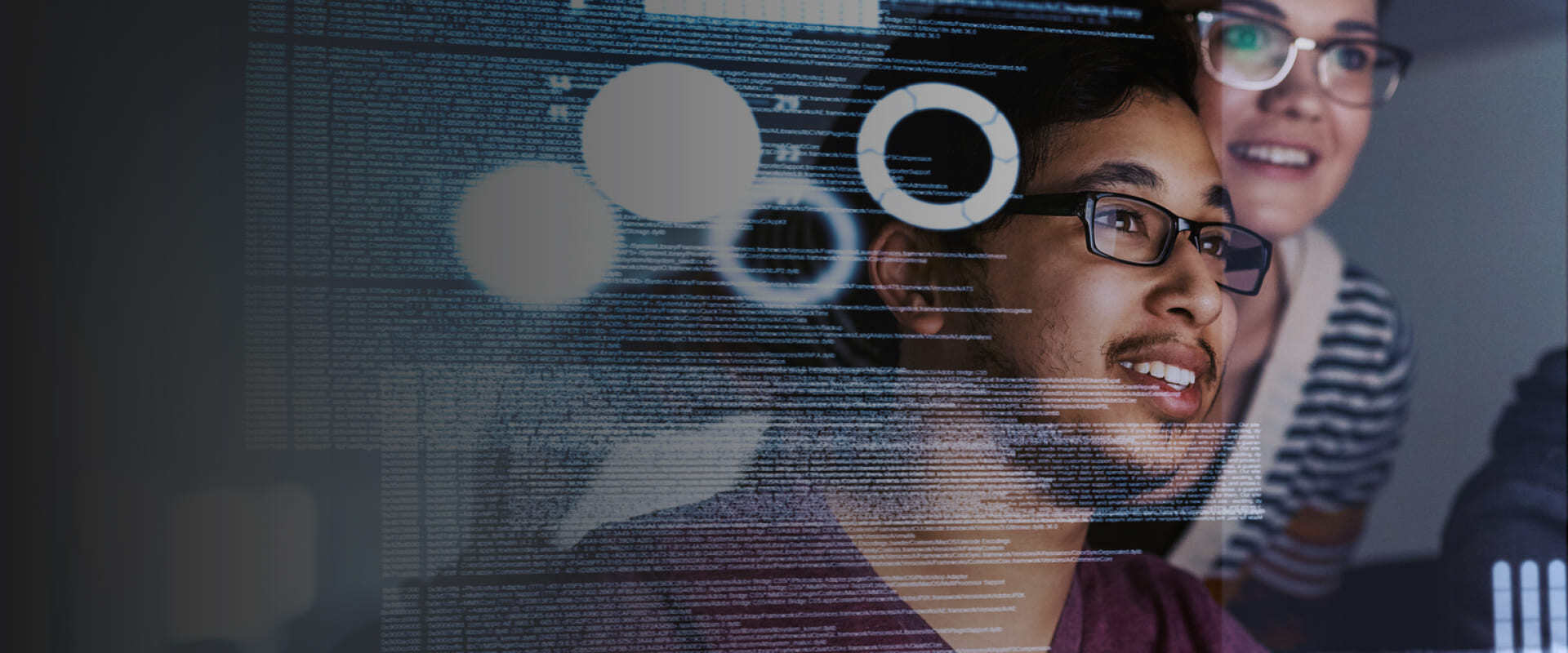Atlas Systems Named a Representative Vendor in 2025 Gartner® Market Guide for TPRM Technology Solutions → Read More
Cybersecurity Trends: Top Threats and Innovations to Track


8 min read | Last Updated: 22 Aug, 2025
Understanding the current cybersecurity trends is essential for developing robust defense strategies against emerging threats. The frequency and sophistication of cyber threats have increased significantly over the years, posing significant risks to personal data, financial information, and critical infrastructure. Cybercriminals use advanced tools and techniques to exploit vulnerabilities, ranging from phishing scams and ransomware attacks to deepfake technology and AI-driven hacking.
Regulatory bodies worldwide are implementing stricter cybersecurity laws and compliance requirements to ensure data protection and privacy. Governments and organizations are collaborating to strengthen cybersecurity frameworks, share threat intelligence, and develop more resilient systems.
As cyber threats continue to grow in complexity, the need for a dynamic and adaptive cybersecurity strategy has never been more critical.
What are Cybersecurity Trends?
Cybersecurity trends refer to the evolving digital security patterns, behaviors, and technologies. These trends encompass malicious actors' strategies to exploit vulnerabilities and the defensive measures and innovations developed to counteract such threats. Staying abreast of these trends is crucial for organizations and individuals to safeguard their digital assets proactivhealthcareely.
The dynamic nature of cybersecurity means that threats are continually adapting, often becoming more sophisticated.
For instance, integrating AI into cyberattacks has enabled adversaries to execute highly targeted and efficient assaults. Conversely, AI is also being used to enhance defensive mechanisms, creating a continuous cycle of attack and defense advancements.

Understanding these trends allows stakeholders to anticipate potential risks and implement preemptive measures, strengthening their security posture in an ever-evolving digital environment.
A Look Back at Cybersecurity Trends
Reflecting on the evolution of cybersecurity provides valuable insights into how past events have shaped current security paradigms. In the early days of the internet, cyber threats were relatively rudimentary, often involving simple viruses and basic hacking attempts. As technology advanced, so did the complexity of cyber attacks. The late 1990s and early 2000s witnessed the rise of worms and malware capable of self-replication, leading to widespread disruptions.
The proliferation of e-commerce and online banking in the mid-2000s introduced new attack vectors, with cybercriminals targeting financial data through phishing schemes and Trojans. The subsequent decade saw an escalation in state-sponsored attacks and espionage, highlighting the geopolitical dimensions of cybersecurity. Notably, the 2010s experienced significant data breaches affecting millions of users, underscoring the vulnerabilities inherent in centralized data storage.
These historical trends have informed the development of contemporary security frameworks, emphasizing the need for proactive and adaptive defense strategies.
Recent Trends in Cybersecurity
As of 2025, several notable trends have emerged in cybersecurity. One significant development is the widespread adoption of Zero-Trust Architecture (ZTA). This security model operates on the principle of "never trust, always verify," requiring continuous authentication and strict access controls for all users and devices, regardless of their location within or outside the network. The shift towards ZTA has been driven by the increasing complexity of network environments and the need to mitigate insider threats.
Another prominent trend is the integration of AI and machine learning in offensive and defensive cybersecurity operations. Cyber adversaries use AI to conduct sophisticated attacks, such as automating phishing campaigns and evading traditional security measures. Organizations are deploying AI-driven tools to detect anomalies, predict potential threats, and automate incident responses. This AI-driven arms race necessitates continuous innovation and investment in advanced security solutions.
Key Cybersecurity Trends
1. Zero Trust Architecture (ZTA) Becomes the Standard
Unlike conventional security models that assume everything within the network is trustworthy, ZTA mandates continuous verification of all users and devices before granting access. This approach minimizes the risk of insider threats and unauthorized access, making it a crucial framework for modern cybersecurity strategies.
With the rise of remote work and cloud adoption, ZTA ensures that security is maintained regardless of user location.
Organizations implement multi-factor authentication (MFA), micro-segmentation, and strict identity verification protocols to reduce vulnerabilities. As cyberattacks become more sophisticated, Zero Trust is emerging as a vital defense mechanism to protect sensitive data.
2. AI and Machine Learning in Cybersecurity
AI-driven security solutions analyze vast amounts of real-time data to identify patterns, anomalies, and potential threats. These automated systems improve the speed and accuracy of threat detection, helping organizations prevent cyberattacks before they cause significant damage.
Cybercriminals are also using AI to develop more advanced attack methods, such as deepfake phishing and AI-generated malware. As a result, cybersecurity experts must continuously refine AI-based defense mechanisms to stay ahead. The integration of AI in security operations centers (SOCs) is proving to be a game-changer in strengthening overall cybersecurity resilience.
3. Rise in Ransomware-as-a-Service (RaaS)
Ransomware has evolved into a lucrative business model with the emergence of Ransomware-as-a-Service (RaaS). Cybercriminals now sell or lease ransomware tools to less-skilled attackers, significantly increasing the number of ransomware incidents. RaaS enables even non-technical threat actors to launch devastating attacks against businesses, governments, and individuals.
The financial and operational impacts of ransomware attacks are severe, with organizations facing data loss, reputational damage, and hefty ransom demands. To counter RaaS threats, businesses are investing in advanced endpoint detection and response protection, data backups, and employee training on ransomware prevention. Governments worldwide are also enacting stricter regulations to combat the growing ransomware epidemic.
4. Cloud Security Takes Center Stage
Securing cloud environments has become a top priority as businesses increasingly migrate to the cloud. The shift to cloud-based infrastructures introduces new vulnerabilities, such as misconfigured cloud settings, insecure APIs, and unauthorized access. Cybercriminals frequently exploit these weaknesses to steal data, disrupt operations, or launch large-scale attacks.
Organizations are adopting cloud-native security solutions to address these challenges, including identity and access management (IAM), cloud security posture management (CSPM), and encryption protocols. Ensuring compliance with industry regulations and implementing robust cloud security frameworks will be essential in mitigating risks associated with cloud computing.
5. IoT Security Becomes Critical
The rapid adoption of Internet of Things (IoT) devices has introduced significant cybersecurity risks. From smart home devices to industrial sensors, IoT devices often have weak security measures, making them attractive targets for hackers. Cybercriminals exploit vulnerabilities in IoT networks to launch botnet attacks, steal data, or disrupt critical services.
Manufacturers and organizations focus on secure device authentication, firmware updates, and network segmentation to enhance IoT security. Governments are also pushing for stricter IoT security standards to ensure consumer protection. As the number of IoT devices continues to rise, prioritizing their security will be crucial in preventing large-scale cyber threats.
6. Supply Chain Attacks on the Rise
Cybercriminals increasingly target supply chains to compromise multiple organizations through a single attack. Supply chain attacks occur when hackers infiltrate a trusted vendor or service provider to gain access to their customers' systems. High-profile incidents, such as the SolarWinds attack, have demonstrated the devastating consequences of supply chain vulnerabilities.
Organizations must implement rigorous security assessments for their vendors and partners to mitigate supply chain risks. Adopting robust third-party risk management frameworks, conducting regular security audits, and enforcing strict access controls can help prevent supply chain attacks. As cybercriminals refine their tactics, securing the supply chain must remain a top priority.
7. Regulatory Compliance and Data Privacy Enhancements
With growing concerns over data privacy, governments worldwide are enforcing stricter cybersecurity regulations. Laws such as the General Data Protection Regulation (GDPR), California Consumer Privacy Act (CCPA), and upcoming cybersecurity frameworks require businesses to adopt stringent data protection measures. Non-compliance can result in hefty fines and reputational damage.
Organizations prioritize regulatory compliance by implementing data encryption, user consent management, and security awareness training. As regulations evolve, businesses must stay updated on compliance requirements to avoid legal consequences. Strengthening data privacy practices ensures regulatory compliance, builds customer trust, and enhances cybersecurity resilience.
State of Cybersecurity in 2026
By 2026, cybersecurity will evolve into a dynamic battlefield where artificial intelligence is central to offense and defense. Organizations increasingly rely on AI-driven threat detection and response systems to combat sophisticated cyberattacks that leverage machine learning to evade traditional security measures. Zero-trust architecture will become the industry standard, as businesses and governments recognize the vulnerabilities of perimeter-based security models. Meanwhile, the proliferation of quantum computing research will also ignite a race to develop quantum-resistant encryption, with some institutions already deploying post-quantum cryptographic algorithms to safeguard sensitive data. The regulatory landscape has to be intensified, with nations implementing stricter data protection laws, making compliance a significant challenge for global enterprises.
Despite these advancements, the cybersecurity landscape in 2026 remains fraught with new challenges. Ransomware will evolve beyond simple data encryption, with cybercriminals now leveraging deepfake technology to conduct more convincing social engineering attacks. The rise of decentralized finance (DeFi) and digital currencies will create fresh attack vectors, with hackers exploiting smart contract vulnerabilities to siphon millions in assets. The increasing interconnectivity of critical infrastructure, ranging from power grids to healthcare systems, will heighten the risk of cyber-physical attacks that could have real-world consequences.
Build a Robust Cybersecurity Posture to Meet Evolving Threats
The continuous advancement of cybersecurity technology, such as AI-driven threat detection and blockchain-based security solutions, offers new possibilities for strengthening digital defenses. However, with every technological breakthrough comes the challenge of staying ahead of cybercriminals who adapt their tactics accordingly. Foster a culture of cybersecurity awareness and invest in training programs to equip employees with the knowledge needed to recognize and mitigate potential threats.
Cybersecurity is no longer solely the responsibility of IT departments; it requires a holistic approach involving every organizational stakeholder. From implementing strict access controls to ensuring compliance with evolving data protection regulations, businesses must integrate security into their overall operational strategies. As we look toward the future, the key to cybersecurity resilience lies in continuous learning, proactive adaptation, and collaborative efforts across industries and global networks.
Looking to strengthen your cyber defenses? Contact Atlas Systems today for stronger security and keep your systems and data safe from today’s ever-changing threats.
FAQs About Cybersecurity Trends
How can small and medium-sized businesses stay updated with cybersecurity trends?
SMBs should follow trusted cybersecurity blogs, attend industry webinars, and engage in online communities. Regular employee training and collaboration with managed security providers can enhance awareness. Subscribing to threat intelligence reports ensures proactive defense. Leveraging automation tools helps monitor and adapt to emerging risks.
What are the emerging trends in cybersecurity insurance policies?
Cyber insurance is shifting toward risk-based pricing, rewarding businesses with stronger security postures. Policies now emphasize proactive risk assessments and include coverage for ransomware and regulatory fines. Insurers are enforcing stricter requirements, such as multi-factor authentication and incident response plans. The industry is also exploring AI-driven underwriting for personalized policy structures.
How is AI impacting cybersecurity?
AI enhances threat detection by analyzing patterns and identifying anomalies faster than traditional methods. It automates incident response, reducing reaction time to cyberattacks. However, attackers also leverage AI to develop more sophisticated threats, such as deepfake phishing and adaptive malware. The cybersecurity race now involves AI-driven defense versus AI-powered threats.
What are the biggest cybersecurity threats?
Ransomware remains a top concern, crippling businesses by encrypting critical data. Phishing attacks grow more deceptive, leveraging AI to craft highly personalized scams. Supply chain vulnerabilities expose organizations to breaches through third-party partners. Emerging threats include deepfake fraud, cloud misconfigurations, and zero-day exploits targeting unpatched software.
How will cybersecurity evolve in the coming years?
Cybersecurity will become more AI-driven, with automated threat response and predictive analytics playing key roles. Zero-Trust Architecture will be widely adopted, minimizing attack surfaces. Quantum computing may challenge current encryption methods, prompting new cryptographic advancements. Collaboration between governments and businesses will strengthen global cyber defense frameworks.
Related Reading
Blogs
.png?width=869&height=597&name=image%20(5).png)

.png?width=300&height=175&name=Rectangle%2034624433%20(2).png)







.png?width=645&height=667&name=Widgets%20(2).png)







.png)

